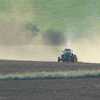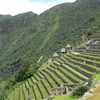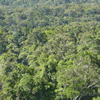Land plays an important role in global cycles of greenhouse gases (GHGs, the major GHGs are carbon dioxide (CO2), methane (CH4) and nitrous oxide (N2O)). Land use activities can result in emissions of such greenhouse gases to the atmosphere or removal of greenhouse gases from the atmosphere. The United Nations Framework Convention on Climate Change acknowledges that land use can contribute significantly to mitigation of climate change, including through the promotion of sustainable management of forests and oceans as well as other terrestrial, coastal and marine ecosystems. The Convention also indicates that land use will need to take measures to facilitate adequate adaptation to climate change, which is particularly important for ensuring that food production is not threatened.
In its article 5 the Paris Agreement reemphasizes the importance of the existing efforts to mitigate climate change through land use activities, including those related to forests and REDD+. Parties have also included many land use activities in their intended nationally determined contributions (INDCs) and nationally determined contributions (NDCs). Further details are included in the NDC Synthesis Report. First submissions of long-term low greenhouse gas emission development strategies by Parties also indicate that land use will be critical for achieving a balance between anthropogenic emissions by sources and removals by sinks of greenhouse gases in the second half of this century. Their details are included in the LT-LEDS Synthesis Report.
The Intergovernmental Panel on Climate Change (IPCC) 6th assessment report finds that the “Agriculture, Forestry and Other Land Use (AFOLU)” sector on average, accounted for 13-21% of global total anthropogenic GHG emissions in the period 2010-2019. Estimated anthropogenic net CO2 emissions from AFOLU (based on bookkeeping models) result in a net source of +5.9±4.1 GtCO2eq/yr between 2010 and 2019 with an unclear trend. Land use change drivers net AFOLU CO2 emission fluxes, with deforestation being responsible for 45% of total AFOLU emissions. The IPCC report finds that the AFOLU sector offers significant near-term mitigation potential, with mitigation measures in forests and other natural ecosystems providing the largest share of the AFOLU mitigation potential between 2020 and 2050. In addition to being a net carbon sink and source of GHG emissions, land plays an important role in climate through albedo effects, evapotranspiration, and aerosol loading through emissions of volatile organic compounds.
Consequently, the Conference of the Parties (COP) and the Conference of the Parties serving as the meeting of the Parties to the Kyoto Protocol (CMP) through their permanent subsidiary bodies, i.e. Subsidiary Body for Scientific and Technological Advice (SBSTA) and Subsidiary Body for Implementation (SBI), and other bodies established under them undertake work on a number of matters relating to land use. These include:
 |
Sharm el-Sheikh joint work on implementation of climate action on agriculture and food security
The Conference of the Parties at its twenty-seventh session, held in Sharm El Sheikh in 2022, established the Sharm el-Sheikh joint work on implementation of climate action on agriculture and food security. The four-year joint work includes implementation of the outcomes of the Koronivia joint work on agriculture and previous activities addressing issues related to agriculture, as well as future topics.
|
 |
Sharm el-Sheikh online portal
The Conference of the Parties at its twenty-seventh session also established the Sharm el-Sheikh online portal under the Sharm el-Sheikh joint work on implementation of climate action on agriculture and food security for sharing information on projects, initiatives and policies for increasing opportunities for implementation of climate action to address issues related to agriculture and food security.
|
 |
Land Use, Land-Use Change and Forestry (LULUCF)
Human activities related to land use influence the exchange of greenhouse gases between terrestrial ecosystems and the atmosphere and hence have an impact on climate change. Land use, land-use change and forestry (LULUCF) emissions and removals have been addressed by the Convention, Kyoto Protocol and Paris Agreement processes.
|
 |
Reducing emissions from deforestation and forest degradation in developing countries (REDD+)
The COP, at its 13th session, affirmed the urgent need to take further meaningful action to reduce emissions from deforestation and forest degradation in developing countries (often referred to by the acronym REDD+). At its 19th session, the COP adopted the Warsaw Framework for REDD+, which provides guidance on several essential aspects of REDD+ implementation. These web pages give an overview of REDD+ under the UNFCCC.
|
 |
REDD+ Web Platform
The COP encouraged all Parties, relevant organizations and stakeholders to share information on REDD+ implementation. It requested the secretariat to develop a REDD+ Web Platform where such information will be made available. Parties further decided that the REDD+ Web Platform will contain an interactive REDD+ discussion forum to enhance sharing of information, experiences and lessons learned on the use of the IPCC guidance and guidelines. The REDD+ Web Platform also contains submissions of forest reference emission levels and/or forest reference levels by developing country Parties and the Lima Information Hub for REDD+.
|

